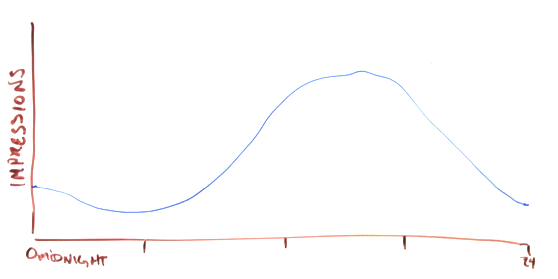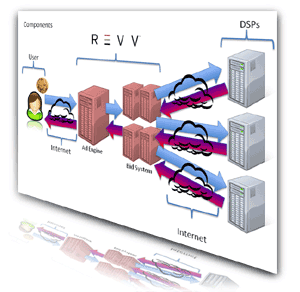My post was originally published on the Rubicon Project blog. It was written with contributions from Dr. Neal Richter and Jonathan Zhuang.
Pacing algorithms come in a few basic forms at the Rubicon Project. The most basic is one called “as fast as possible” which can hardly be shown to do anything that resembles pacing. The Pacing controller is supposed to spread out impressions served for a campaign throughout the day. In general it takes the goal of impressions to serve in a given day as input and calculates a serving schedule for the campaign.

A naive pacing algorithm will break the day up into 24 segments, let’s call them hours. It will allocate equal amounts of campaign impression for each hour and then recommend the campaign get impressions until the hour’s allocation is exhausted. This algorithm has a couple of pretty big flaws. Primarily it tends to serve the campaigns at the beginning of each hour and then once the allocated impressions are used up it stops serving until the next hour. The second flaw is that it has no understanding of the traffic distribution throughout the day. The 1AM hour doesn’t have the same amount of traffic coming in as the 10AM hour. If the inventory is relatively scarce the campaign will under-serve during the early hours, catch up during the peak hours, and then under-serve again in the later hours. Ultimately campaigns using this algorithm may not achieve their goals at the end of the day and it won’t serve evenly in a given hour. Read more




 Bernhard Glock of Medialink, who was not on the panel, but chimed in with a profound thought. Buying on television is buying something that’s familiar, with seemingly known or at least comfortable impact and expectations on results. By contrast, buying online display is a complete mystery. His solution, just buy on television because that’s what he understands.
Bernhard Glock of Medialink, who was not on the panel, but chimed in with a profound thought. Buying on television is buying something that’s familiar, with seemingly known or at least comfortable impact and expectations on results. By contrast, buying online display is a complete mystery. His solution, just buy on television because that’s what he understands.

